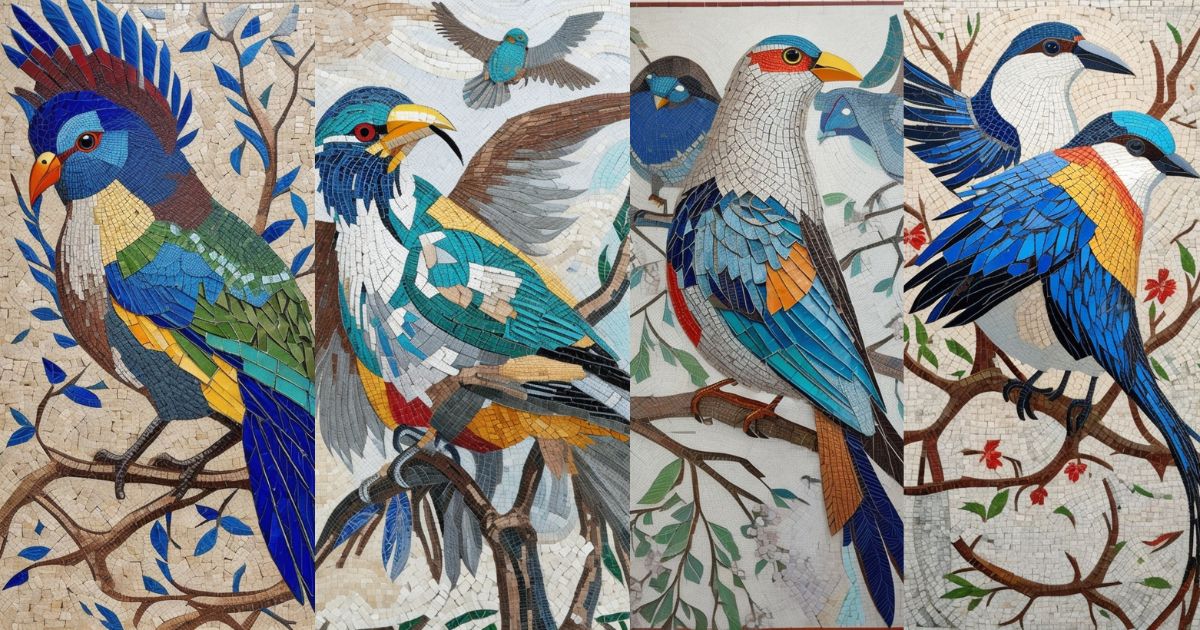Mosaic art is a form of art that has been around for thousands of years. It involves creating images or patterns by arranging small pieces of colored glass, stone, or other materials. Mosaic art can be found in many different cultures and has been used to decorate everything from floors and walls to furniture and jewelry.
One of the earliest examples of mosaic art can be found in the ancient city of Ur, where a mosaic floor dating back to the 3rd millennium BC was discovered. The Greeks and Romans also used mosaic art extensively, creating intricate designs for their floors and walls. In the Byzantine Empire, mosaic art was used to decorate churches and other religious buildings, with many of these mosaics still visible today.
Today, mosaic art continues to be a popular form of artistic expression. Many artists create mosaics using traditional materials like glass and stone, while others experiment with new materials like recycled materials and digital technology. Mosaic art can be found in public spaces, private homes, and galleries around the world, showcasing the versatility and beauty of this ancient art form.
Historical Background of Mosaic Art
Mosaic art has a rich history that dates back to ancient times. The earliest known examples of mosaic art can be traced back to the third millennium BC, where they were used to decorate the floors of temples and palaces in Mesopotamia. The art form then spread to other parts of the world, including Greece and Rome, where it became increasingly popular.
During the Hellenistic period, mosaic art flourished in Greece and was used to decorate the floors of public buildings, such as the agora and the gymnasium. The Romans also adopted the art form and used it to decorate their villas and public buildings, such as the Roman baths. Mosaic art was also used to create intricate and detailed religious scenes in early Christian churches, such as the Basilica di San Vitale in Ravenna, Italy.
In the Middle Ages, mosaic art continued to be popular and was used to create beautiful and intricate designs in churches and other religious buildings. The Byzantine Empire was particularly known for its elaborate and detailed mosaic art, which was used to create stunning religious scenes and portraits.
During the Renaissance, mosaic art experienced a revival, and artists began to experiment with new techniques and materials. The art form continued to evolve throughout the centuries, and today, mosaic art is still a popular and highly respected art form.
Overall, mosaic art has a long and fascinating history, and its intricate designs and beautiful colors continue to captivate people around the world.
Mosaic cactus Art Design Trends 2023
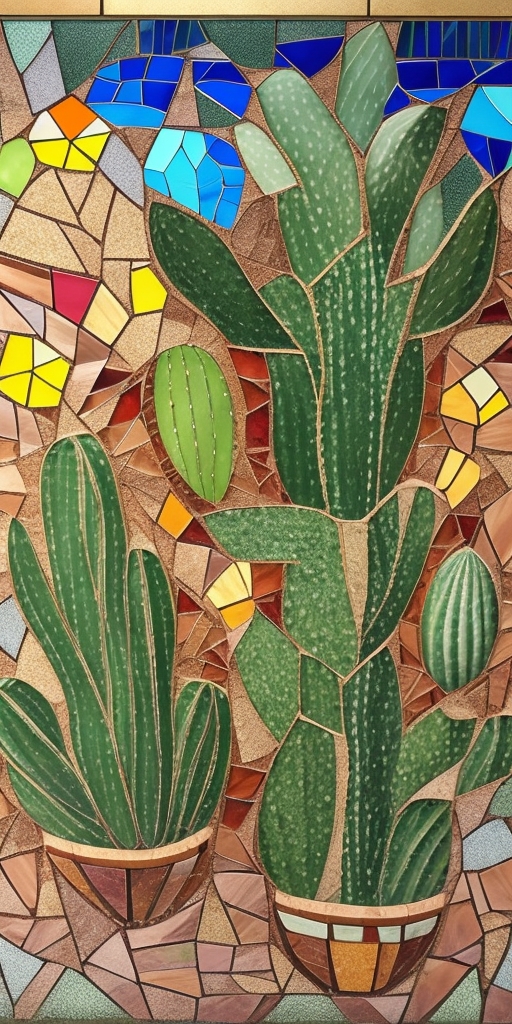
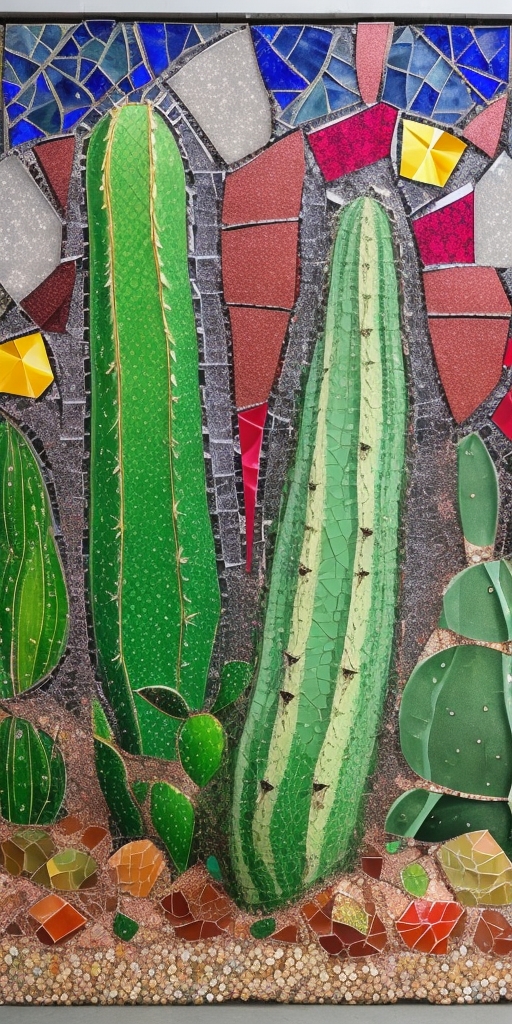
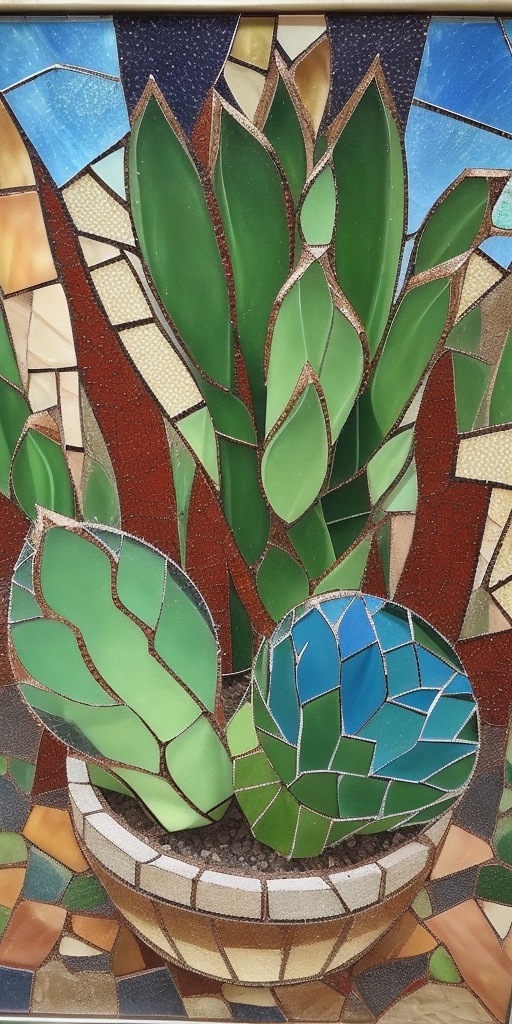
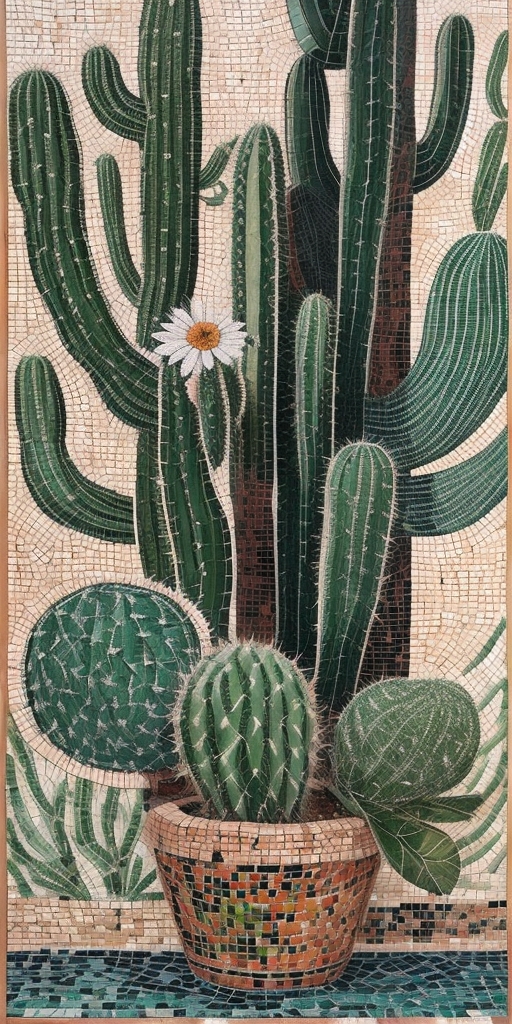
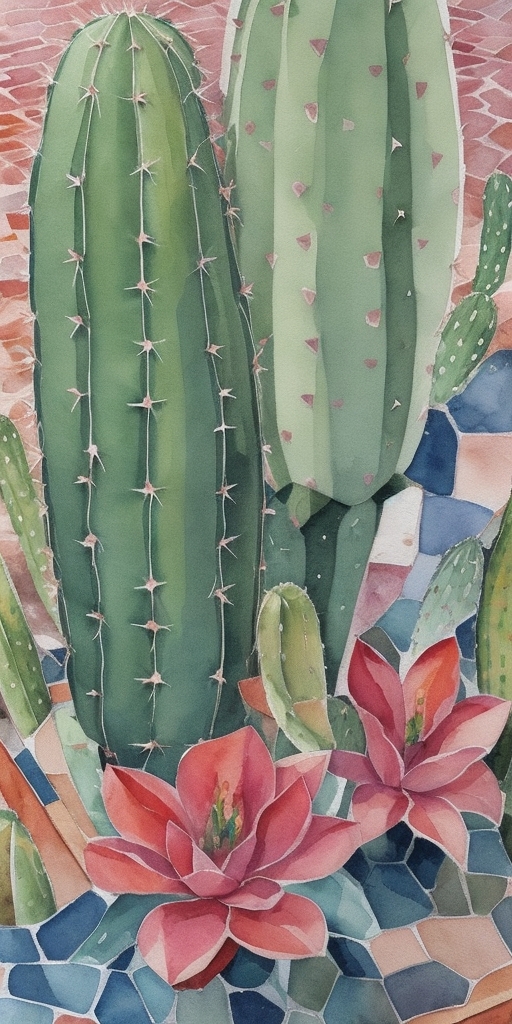

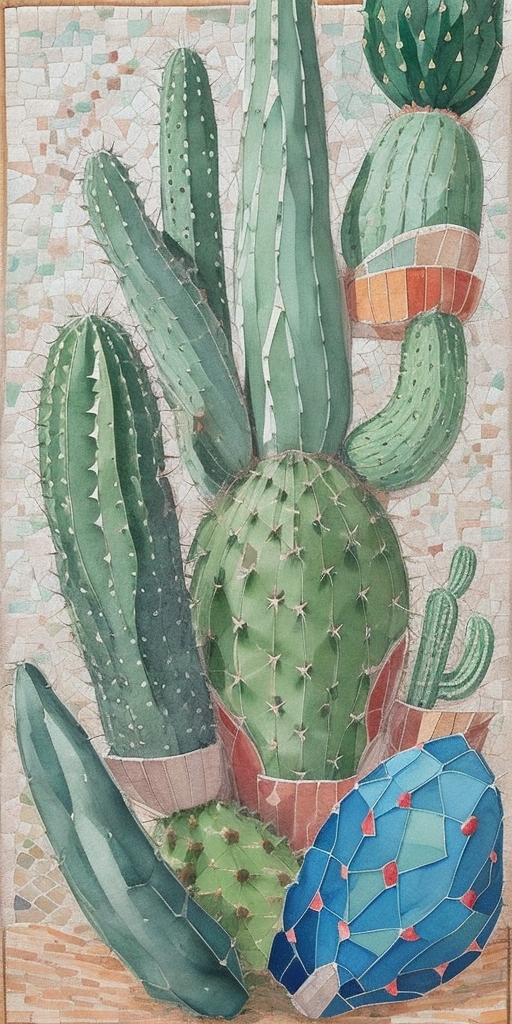
Types of Mosaic Art
Mosaic art is an ancient art form that involves creating a design by assembling small pieces of materials such as pebbles, tiles, or glass. There are various types of mosaic art, each with its unique characteristics. In this section, we will explore three of the most popular types of mosaic art.
Pebble Mosaic
Pebble mosaic, also known as stone mosaic, is a type of mosaic art that uses small, smooth pebbles to create a design. The pebbles are usually arranged in a bed of cement or sand, and then grouted to hold them in place. Pebble mosaics can be used to create intricate designs, or simple patterns, and are often used for outdoor installations, such as garden paths or patios.
Tile Mosaic
Tile mosaic is a type of mosaic art that uses small, square tiles to create a design. The tiles can be made from ceramic, porcelain, or glass, and come in a wide range of colors and textures. Tile mosaics are often used to create detailed designs, such as murals or portraits, and can be used both indoors and outdoors.
Glass Mosaic
Glass mosaic is a type of mosaic art that uses small, colored glass pieces to create a design. The glass pieces can be opaque or transparent, and come in a variety of shapes and sizes. Glass mosaics can be used to create stunning, colorful designs, and are often used for decorative purposes, such as in stained glass windows or wall hangings.
Glass mosaic is a decorative art form that has been around for centuries. It involves the use of small pieces of colored glass, called tesserae, to create intricate designs and patterns. The technique was first used by the ancient Greeks and Romans, who used glass mosaic to decorate their homes and public buildings.
Today, glass mosaic is still a popular art form, with many artists and designers using it to create stunning works of art. It can be used to decorate walls, floors, ceilings, and even furniture. Glass mosaic is a versatile medium that can be used to create a wide range of designs, from simple geometric patterns to complex, abstract compositions. It is also a durable material that can withstand the test of time, making it a popular choice for public art installations and architectural projects.
Beauty of glass mosaics Designs
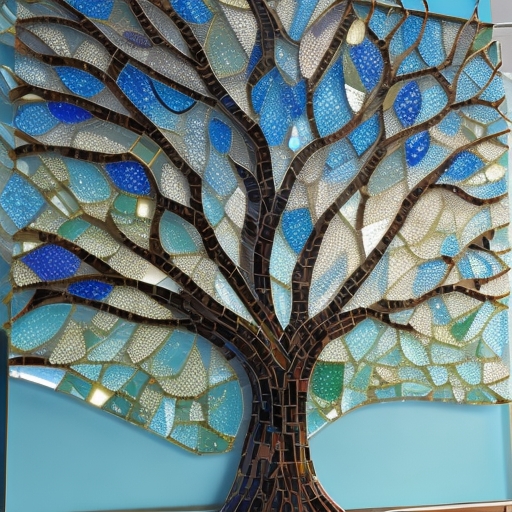
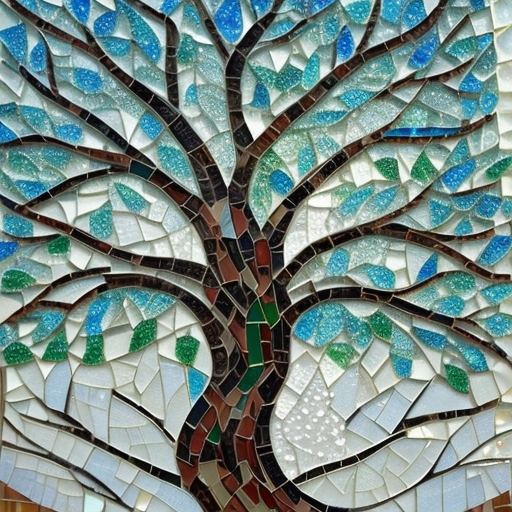
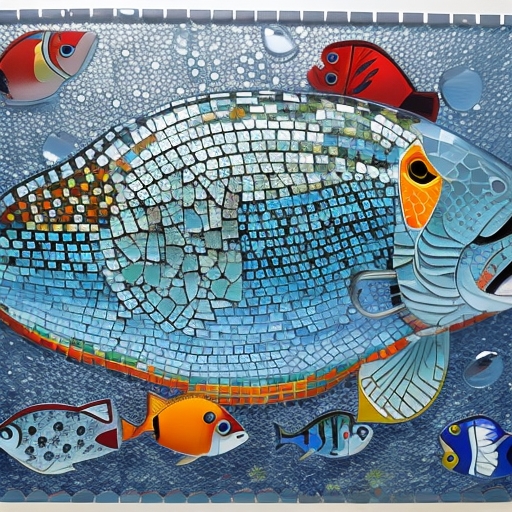
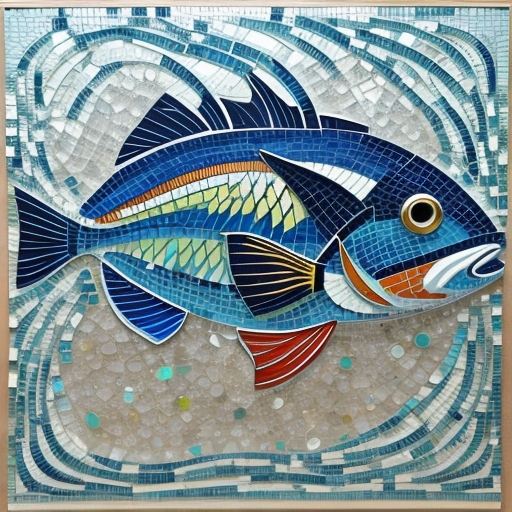
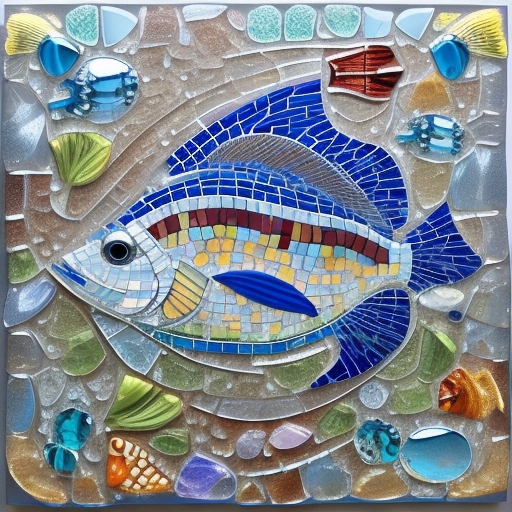
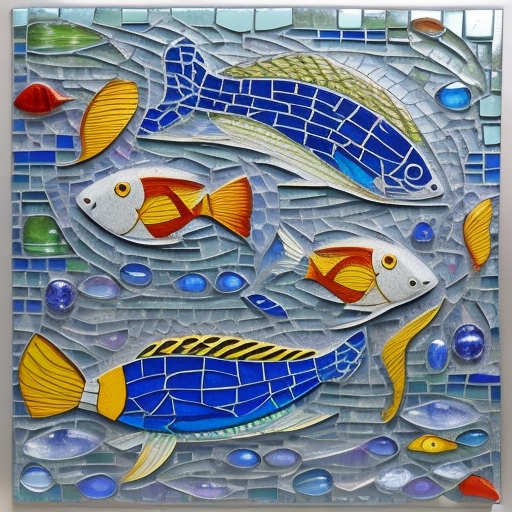
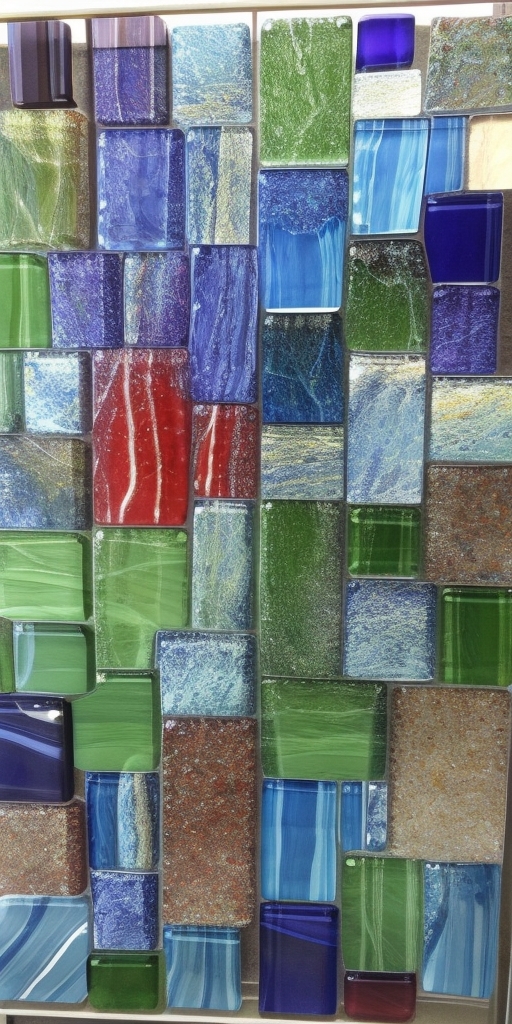

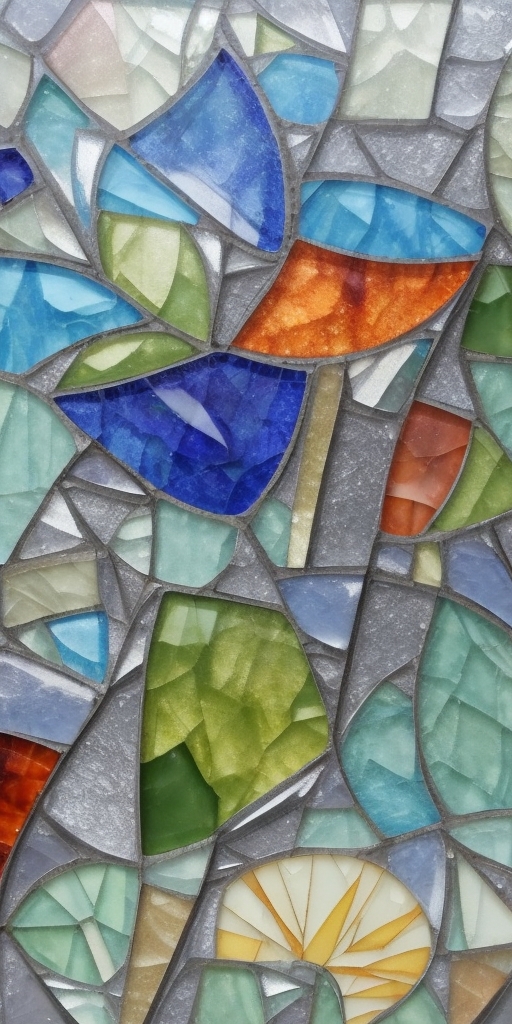
History of Glass Mosaic
Glass Mosaic is an ancient art form that has been practiced for thousands of years. The earliest examples of glass mosaics date back to the 3rd millennium BC in Mesopotamia. The use of glass in mosaics became widespread in the Roman Empire, where it was used to create intricate and colorful designs on walls, floors, and ceilings.
During the Middle Ages, glass mosaics were used extensively in the decoration of churches and other religious buildings. The Byzantine Empire, in particular, was known for its elaborate and intricate glass mosaics, which were used to decorate the interiors of churches and palaces.
In the Renaissance period, glass mosaics became popular in Italy, where they were used to create decorative panels and other works of art. The Venetian glass industry, in particular, was known for its production of high-quality glass tiles, which were used in the creation of mosaics.
In the modern era, glass mosaics have continued to be popular in the decorative arts. They are used in a wide range of applications, from the decoration of public spaces to the creation of fine art pieces. Today, glass mosaics are created using a wide range of techniques and materials, from traditional hand-cut glass tiles to modern computer-controlled glass cutting machines.
Overall, the history of glass mosaic is a rich and diverse one, spanning thousands of years and encompassing a wide range of cultures and artistic traditions. Whether used for religious or secular purposes, glass mosaics have long been appreciated for their beauty, durability, and versatility.
Types of Glass Mosaic
Glass mosaic is a popular choice for creating beautiful and intricate designs in a variety of settings. There are three main types of glass mosaic: Smalti, Vitreous, and Stained Glass.
Smalti
Smalti is a type of glass mosaic that is made by melting glass in a furnace and then pouring it into molds to create small, irregularly shaped pieces. These pieces are then cut by hand into various shapes and sizes, which are used to create intricate designs. Smalti is known for its rich, vibrant colors and its ability to reflect light, making it a popular choice for creating mosaics that shimmer and sparkle.
Vitreous
Vitreous glass mosaic is made by melting glass in a furnace and then pouring it into molds to create small, uniform pieces. These pieces are then cut by machine into various shapes and sizes, which are used to create geometric designs. Vitreous glass mosaic is known for its durability and its ability to withstand harsh weather conditions, making it a popular choice for outdoor mosaics.
Stained Glass
Stained glass mosaic is made by cutting colored glass into small, irregularly shaped pieces and then assembling them into designs. Stained glass mosaic is known for its intricate designs and its ability to create beautiful patterns of light and color. It is often used in religious buildings, but can also be found in homes and other settings.
Overall, each type of glass mosaic has its own unique characteristics and is suited to different types of projects. By understanding the differences between these types of glass mosaic, designers and artists can choose the best material for their specific needs.
Bird Mosaic Art
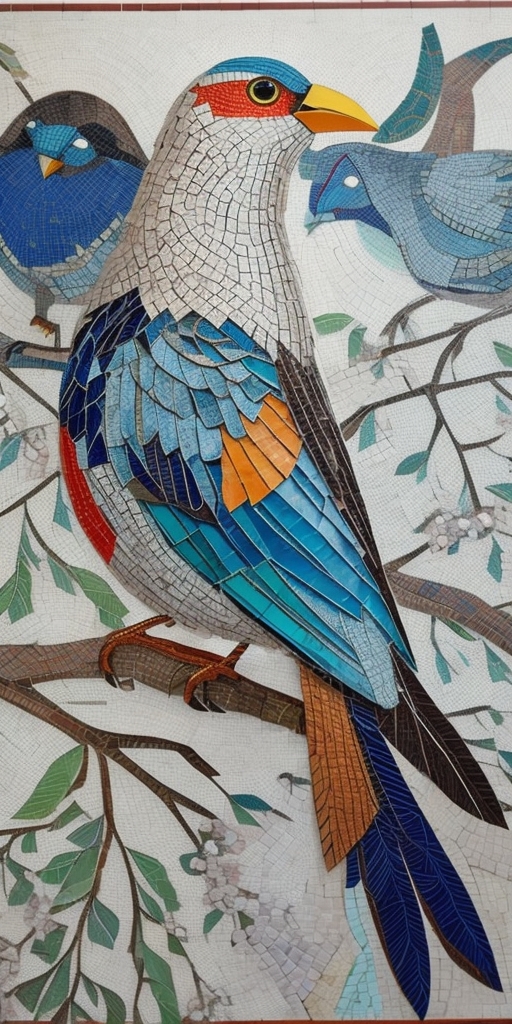
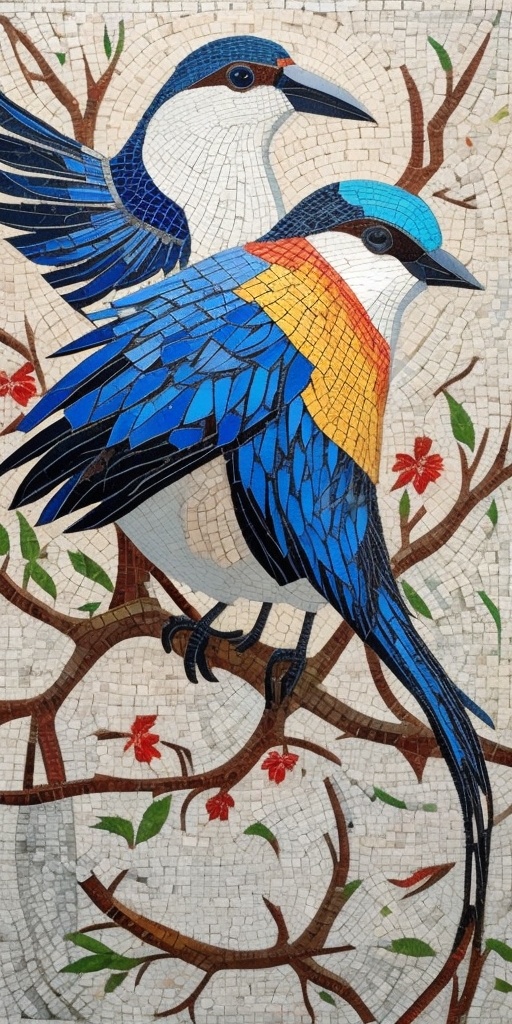
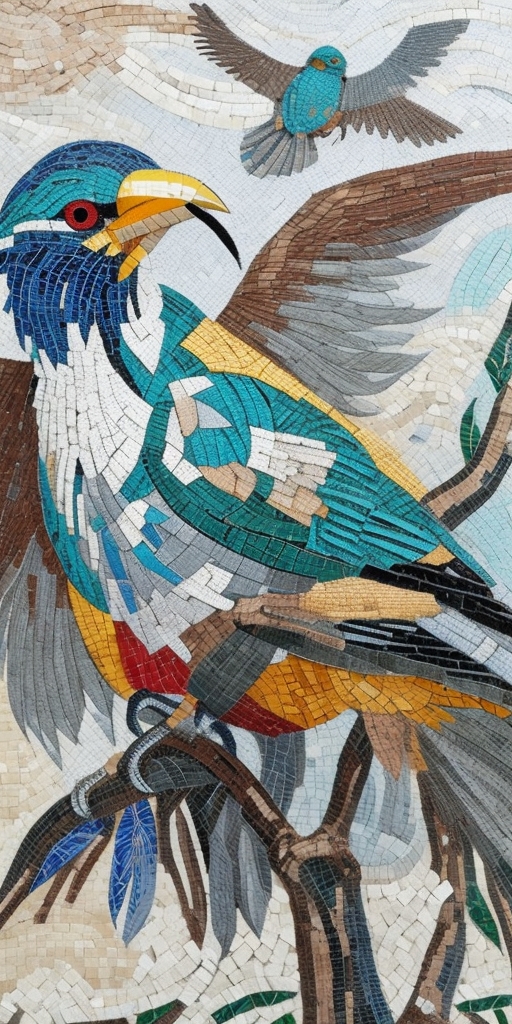
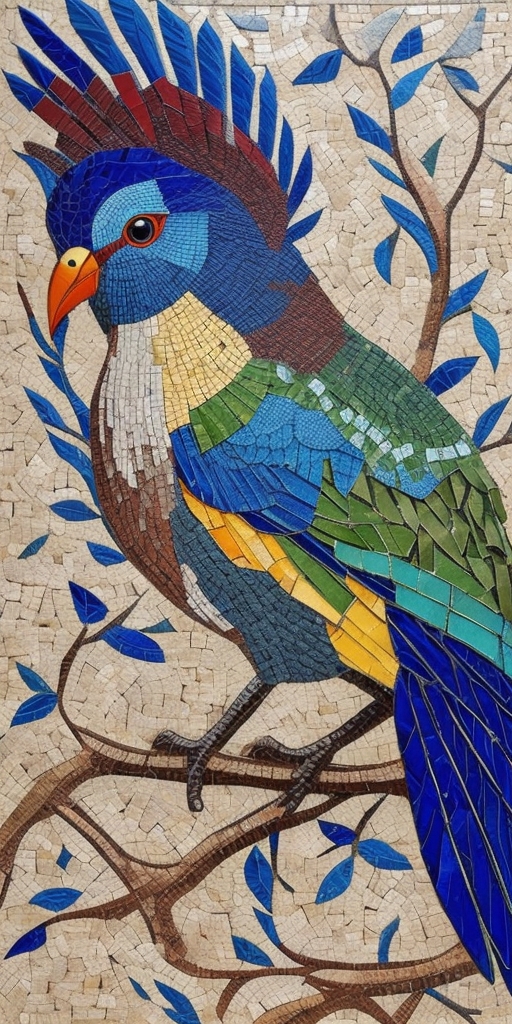
In conclusion, mosaic art is a versatile and beautiful art form that has been used for centuries to create stunning designs. Whether you prefer the natural look of pebble mosaics, the intricate designs of tile mosaics, or the colorful beauty of glass mosaics, there is a type of mosaic art that will suit your taste and style.
